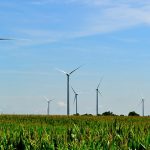In the 1950s, a devastating drought swept through the Great Plains and Southwestern U.S. In places like Texas, it was worse than the Dust Bowl of the 1930s. Farmers from Nevada to Kentucky saw countless crops destroyed and many lost their farms altogether.
The drought was a turning point for many towns. Some struggled for decades after young adults fled during the crisis, looking for opportunities elsewhere. But others were able to bounce back, sometimes thriving even more than they did before the drought.
Research I recently co-authored showed that banks played a major role in how communities fared during and after the crisis. Understanding what happened decades ago offers a cautionary tale about the havoc climate change could create—and a roadmap for how to prevent population loss and economic devastation.
Read the full article at Newsweek.
This article was produced by Footnote in partnership with University of Southern California Marshall School of Business.





